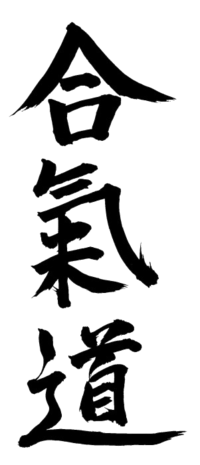


According to the dictionary, Aikido is
"a Japanese form of self-defence and martial art that uses locks, holds, throws, and the opponent's own movements"
This however, is a very simplistic view of "what" Aikido actually is.
Without too much of a history lesson, Aikido was developed in Japan in the early 1900's by Morihei Ueshiba or "O' Sensei" which means "Great Teacher". Ueshiba had, for many years studied other forms of martial arts and was known as formidable combatant - however, it was O'Sensei's wish for for peace, not war, which eventually lead to the creation of Aikido.

Aikido - translated into English means "the Way of Spirit and Harmony" -
As a martial art, Aikido utilizes the aggression or force an attack - it doesn't meet strength with strength, it meets conflict with harmonisation and resolution. Furthermore, there are no "attacks" to speak of in Aikido, it is defensive in nature, designed to neutralise and diffuse aggression rather than cause severe damage (or worse) to an opponent.
Through training, an Aikidoka learns to develop and use "Ki" - which, roughly translated, means "energy" - This allows the Aikidoka to perform techniques without the use of physical strength. The principal of "strength without strength" takes a long time to perfect, but with patience and diligent study, it can become second nature. This means that Aikido can be practiced by anyone regardless of size, strength or physical stature.
Supplementary to "open handed" training, Aikidoka also study the use of Bokken (wooden sword) and Jo (Stave/Short Staff) as part of their training. Some may consider the use of these weapons as "outdated", however they are a key mechanic in understanding the origins and movements of this unique Way.
There is no competition in Aikido, no pressure to perform or be "better" than anyone else.
All in all, Aikido is more than a Martial Art - It's a Budo or "Way" - not only a method of defense, but a method of "being" that encourages and promotes unity, friendship and co-operation. Our Dojos are not meeting houses for people to punch, kick and yell at the top of their lungs whilst trying to destroy their training partners - they are places of study, dedicated to the assimilation of knowledge and understanding conducted ina friendly and welcoming environment,